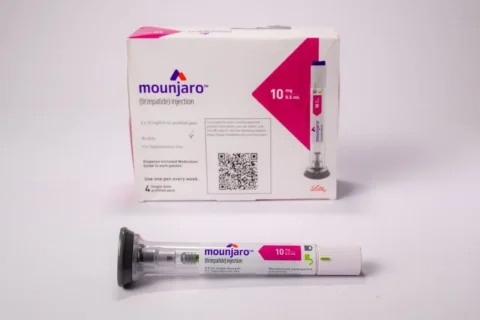Starting a new medication can be both exciting and a little nerve-wracking, especially when it’s something as powerful and promising as tirzepatide. Whether you’re considering tirzepatide for managing type 2 diabetes or for weight loss, it’s essential to be informed about how it might affect you. In this article, we’ll take a friendly, in-depth look at the side effects of tirzepatide, what you should and shouldn’t do while on it, and how to manage any bumps along the way.
What is Tirzepatide?
Tirzepatide is a once-weekly injection that helps control blood sugar levels and has shown impressive results in aiding weight loss. It’s a relatively new medication that mimics hormones in your body that regulate appetite and insulin production. These actions help keep your blood sugar in check and reduce hunger, making it easier to manage both diabetes and weight.
Common Side Effects of Tirzepatide
Like with any medication, your body might need a little time to adjust to tirzepatide. Here are some of the most common side effects you might experience:
1. Gastrointestinal Issues
- Nausea: Feeling queasy is one of the most common side effects when starting tirzepatide. It’s usually mild and tends to get better as your body gets used to the medication.
- Diarrhea: Some people may experience loose stools or more frequent trips to the bathroom. It can be uncomfortable, but staying hydrated helps.
- Vomiting: Although less common, some people might feel sick enough to vomit. If this happens often, talking to your doctor or a QuickMD provider is a good idea.
- Constipation: On the flip side, some folks might find themselves a bit constipated. Drinking plenty of water and eating fiber-rich foods can usually help.
2. Decreased Appetite
One of the ways tirzepatide helps with weight loss is by making you feel less hungry. While this is great for losing weight, ensuring you’re still getting enough nutrients is vital, even if you don’t feel like eating much.
3. Fatigue
Feeling tired or low on energy is another side effect some people report. This usually fades as your body adjusts, but if you’re feeling unusually drained, it’s worth mentioning to your doctor.
4. Injection Site Reactions
Sometimes, the spot where you inject tirzepatide might get a little red, itchy, or swollen. This is pretty common and usually goes away on its own after a few days.
Less Common But Serious Side Effects of Tirzepatide
While most people tolerate tirzepatide well, there are some rare but severe side effects to be aware of:
1. Pancreatitis
Pancreatitis is an inflammation of the pancreas and can cause severe stomach pain, nausea, vomiting, and fever. It’s rare but serious, so if you experience any of these symptoms, seek medical attention right away.
2. Hypoglycemia (Low Blood Sugar)
Tirzepatide can cause your blood sugar to drop too low, especially if you’re also taking other diabetes medications like insulin. Signs of low blood sugar include feeling shaky, dizzy, sweaty, or confused. Keeping a quick source of sugar on hand, like candy or juice, can help you manage this.
3. Kidney Problems
In rare cases, tirzepatide can affect your kidneys, especially if you become dehydrated due to vomiting or diarrhea. Make sure to drink plenty of fluids, and if you notice you’re urinating less, or your hands and feet start to swell, contact your healthcare provider.
4. Allergic Reactions
Allergic reactions to tirzepatide are very rare, but they can happen. Watch out for symptoms like a rash, itching, swelling (especially of the face, tongue, or throat), or trouble breathing. If these occur, seek immediate medical attention.
What Not to Do on Tirzepatide
While tirzepatide can be highly effective, there are a few things you should avoid to ensure the medication works safely and effectively:
1. Don’t Skip Meals
Even if tirzepatide reduces your appetite, it’s important not to skip meals, especially if you’re prone to low blood sugar. Eating regular, balanced meals helps keep your blood sugar stable and ensures you’re getting the nutrients you need.
2. Don’t Overeat or Indulge in Unhealthy Foods
On the flip side, don’t use tirzepatide as a pass to overeat or indulge in unhealthy foods. Although tirzepatide helps manage blood sugar and weight, it works best with a healthy diet. Focus on balanced meals with plenty of fruits, vegetables, lean proteins, and whole grains.
3. Don’t Ignore Symptoms of Low Blood Sugar
If you start to feel symptoms of low blood sugar—like dizziness, shaking, or sweating—don’t ignore them. It’s crucial to treat low blood sugar quickly by eating or drinking something with sugar, like juice, candy, or glucose tablets.
4. Don’t Miss Your Doses
Consistency is key with tirzepatide. Missing doses can reduce the effectiveness of the medication, so try to take it on the same day each week. Setting a reminder on your phone can help keep you on track.
5. Don’t Skip Follow-Up Appointments
Regular follow-ups with your healthcare provider are important when taking tirzepatide. These appointments allow your provider to monitor your progress, adjust your dose if needed, and address any concerns you may have.
Managing Tirzepatide Side Effects
If you do experience side effects while taking tirzepatide, there are ways to manage them effectively:
- Start Slow: Your doctor may recommend starting with a lower dose to help your body adjust to the medication.
- Stay Hydrated: Drinking plenty of water can help manage symptoms like nausea and prevent dehydration if you experience diarrhea or vomiting.
- Monitor Blood Sugar: Keep an eye on your blood sugar levels, especially if you’re also taking other diabetes medications.
- Eat Small, Frequent Meals: If nausea is an issue, try eating smaller, more frequent meals to settle your stomach.
Conclusion: Is Tirzepatide Right for You?
Tirzepatide offers exciting benefits for managing type 2 diabetes and aiding in weight loss, but it’s important to be aware of the potential side effects and how to manage them. By working closely with your healthcare provider, you can decide whether tirzepatide is the proper medication for you. Remember, you’re not alone in this journey. Seeking professional weight loss advice can provide you with the support and care you need.
At QuickMD, we make it easy to get a tirzepatide prescription and start your journey toward better health. Our online platform connects you with experienced healthcare providers who can help you manage your diabetes, lose weight, and live a healthier life—all from the comfort of your home.
Ready to take the next step? Schedule a consultation with QuickMD to discuss tirzepatide and other weight loss services today. Your journey to a healthier you is just a click away!




